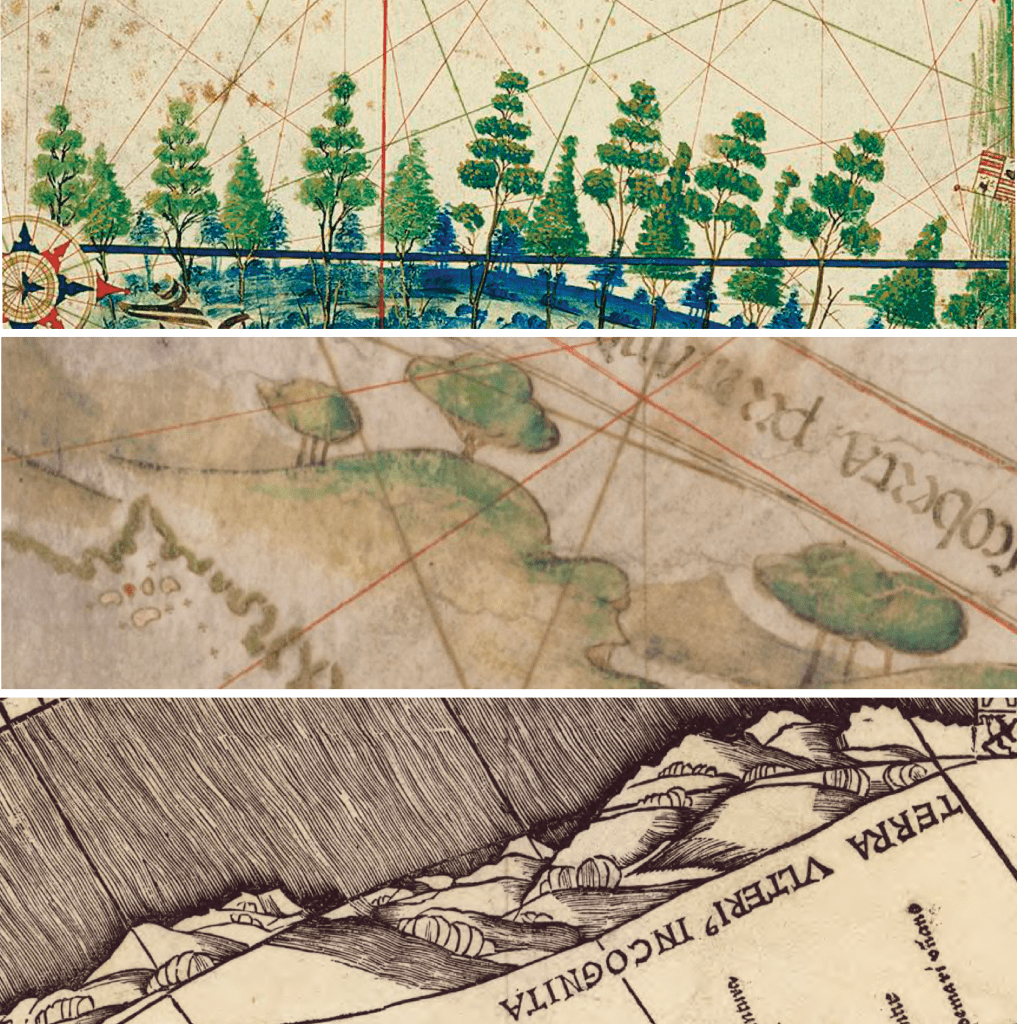Figure 5.4. The Abstraction of Trees
Details from Carta del Cantino, 1502, Estensi Digital Library, Biblioteca Estense Universitaria, Modena, with permission pending from the Ministry of Cultural Heritage and Activities, Italy (top); Caverio, Planisphère nautique, 1506, Bibliothèque Nacionale de France, Paris (center); and Martin Waldseemüller, Universalis Cosmographia, 1507, Geography and Map Division, Library of Congress, Washington, D.C. (bottom).
Just as parrots became less detailed and simpler in design as they moved from chart to chart and from chart to map, the same can also be seen with trees. On Carta del Cantino, the chartmaker (or illuminator) painted three distinctive types of trees over Brazil (above, top). On Planisphère nautique, Caverio greatly simplified the trees as well as the landscape (above, center). The trees are abstracted shapes on Waldseemüller’s Universalis Cosmographia (above, bottom).
This simplification in imagery as it was copied by later chartmakers and mapmakers reveals that once visual codes were associated with regions–parrots and trees with the Americas, for example–the imagery could become simpler,or even abstract. Once a visual code was established, it did not need to be as detailed in order for its meaning to be understood.
